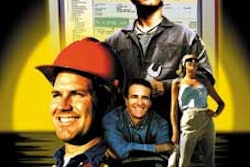Last month, I used this space to remind everyone that the sky is not falling because residential building is down. Chuck Yengst, a well-known construction industry analyst, outlined many reasons to be optimistic in the current economic climate. Now it seems there are even more reasons to keep those rose-colored glasses on.
Ken Simonson, chief economist for Associated General Contractors of America, recently claimed he expects U.S. construction spending to grow 5 percent this year, despite the weakness in the housing market. He said we can expect to see a $1.2-trillion construction outlay, mostly due to a boom in hotels and resorts, as well as hospitals, manufacturing plants and energy facilities. According to Simonson, spending in construction's private non-residential sector is running 10 to 12 percent ahead of last year, a trend which is expected to continue into 2007.
The fact is, manufacturers that survived the lean years between 1998 and 2003 are updating and expanding, while hospitals are going high-tech and hotels and resorts are taking advantage of the public's renewed enthusiasm for travel. All this translates into an overall increase in construction activity.
In addition to these trends, highway and road construction remain strong due to increased federal legislation, while school spending is going up due to higher property taxes. As such, Simonson was quoted to predict that construction spending will be 6 to 10 percent higher this year than last year.
While everyone has an opinion on how long the housing sector will be down, most agree that it should be back on track by 2008 or sooner. When you factor in the realities of today's home buyers, it's easy to see why housing won't be down for long. For example, affluent baby boomers will need retirement housing while their children — the echo boomers — will be buying their starter homes. Meanwhile, immigrants who entered the country 20 years ago and have gained financial security and are now looking to buy a house to complete their American dream.
All this aside, Simonson pointed out that the housing slowdown should not be the biggest concern for those who make the construction industry their livelihood. Material prices are the biggest challenge. Since August 2005, for example, the cost of steel has increased 23 percent, asphalt paving mix is up 38 percent and diesel fuel has increased 27 percent. The rising cost of materials impacts everyone's budgets, significantly affecting the availability and price of wholegoods. For rental businesses, that means you have to plan accordingly. And while the equipment you add to your inventory might be more expensive than it was a year ago, at least you can count on there being contractors out there to rent it.




















